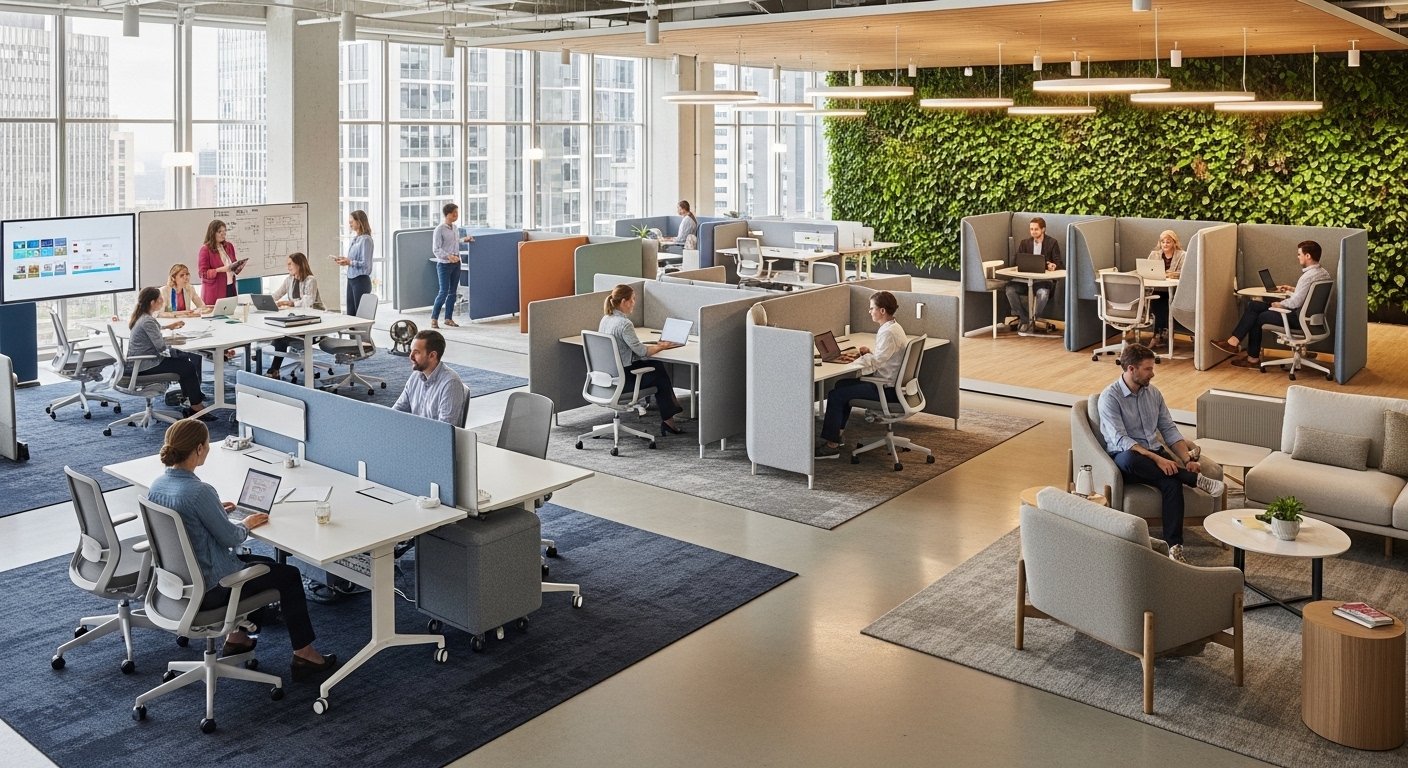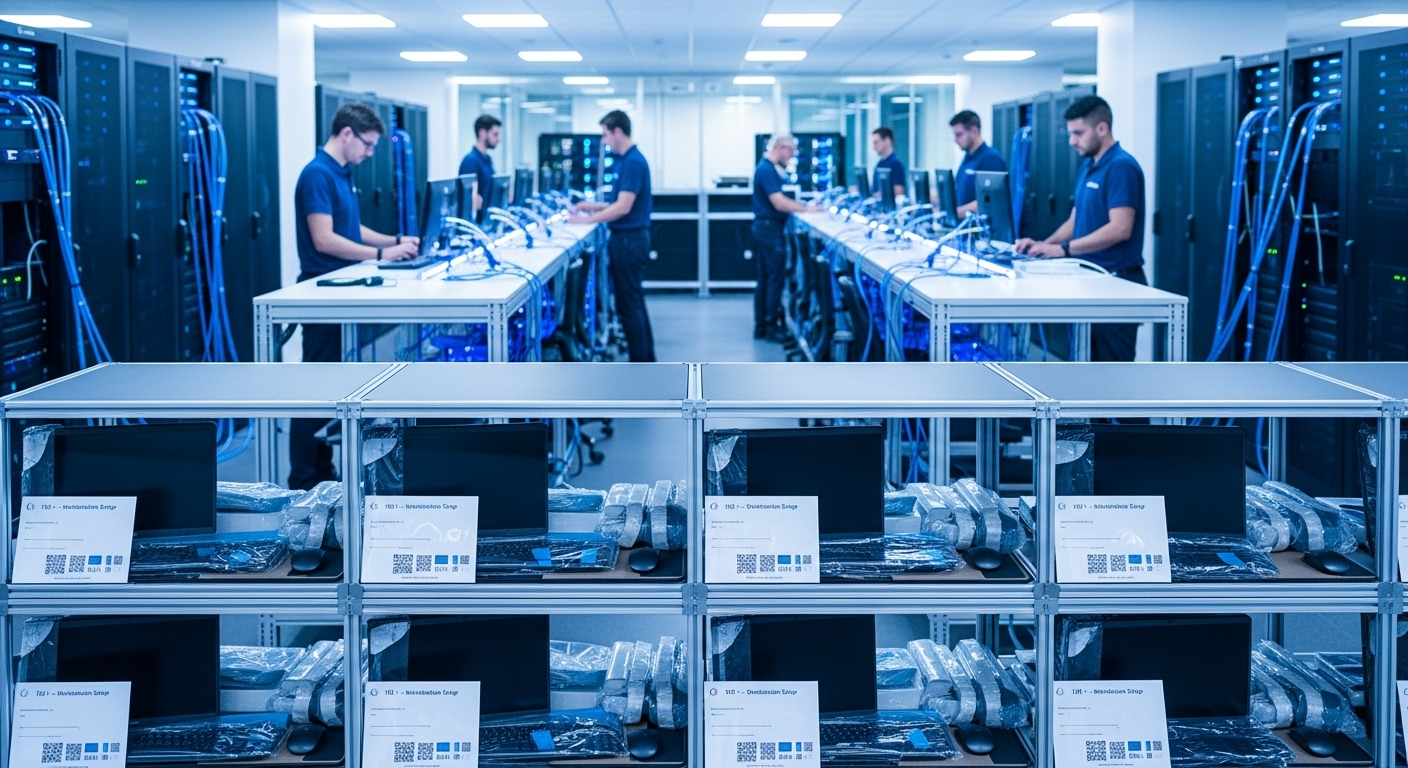In the vibrant and fiercely competitive business landscape of Austin, a generic office is more than just a missed opportunity—it’s a competitive disadvantage. As companies vie for top talent and market share in the heart of Silicon Hills, the physical workspace has evolved from a simple container for work into a powerful storytelling medium. Branding your space is no longer about slapping a logo on the wall; it’s a strategic imperative that involves translating your company’s core identity into a tangible, multi-sensory experience. This process, known as environmental or experiential branding, is critical for reinforcing culture, inspiring employees, and making an unforgettable impression on clients. For a business to thrive here, its physical presence must authentically reflect its values and resonate with the city’s unique, creative energy. This guide will walk you through the essential steps for transforming your office into a powerful brand asset, covering everything from decoding your brand DNA to leveraging local culture and measuring the tangible impact of your design.
Decoding Your Brand DNA: The Foundation of Spatial Storytelling
Before a single can of paint is opened or a piece of furniture is ordered, the foundational work of branding your space begins with deep introspection. You cannot tell a compelling story if you don’t know the plot. This initial phase involves a thorough excavation of your brand’s core identity—its mission, vision, and values. What is the fundamental promise you make to your customers and your employees? What is the personality of your brand? Is it disruptive and energetic, or is it calm, stable, and reassuring? These abstract concepts must be translated into a ‘spatial brief,’ a document that will guide every subsequent design decision. This process often involves workshops with leadership and team members to brainstorm keywords, emotions, and experiences associated with the brand. For instance, a brand that values ‘transparency’ might translate this into glass walls and an open-concept layout. A brand focused on ‘sustainability’ would prioritize reclaimed materials, natural light, and biophilic elements. This strategic groundwork ensures that the final design is not just aesthetically pleasing but is a genuine and coherent extension of the brand’s soul. It’s the critical step that prevents your office from becoming a collection of design trends and instead transforms it into a purposeful environment that actively communicates who you are and what you stand for.
The Sensory Palette: Translating Brand Values into Tangible Elements
With a clearly defined brand DNA, the next step is to build a sensory palette that brings your story to life. This goes far beyond visual aesthetics and engages all the senses to create an immersive experience. Color psychology plays a pivotal role; blues can evoke trust and stability, while yellows and oranges can stimulate creativity and energy. The choice of materials is equally communicative. Polished concrete and exposed steel might speak to an industrial, tech-focused identity, whereas warm, reclaimed wood and soft textiles can create a feeling of comfort and groundedness. In a city as culturally rich as Austin, incorporating materials from local artisans and suppliers can add another layer of authenticity. Lighting is another powerful tool; is it bright and energizing to foster collaboration, or is it soft and focused to encourage deep work? Even scent and sound can be part of the brand experience. A subtle, custom scent in the reception area or a curated playlist that reflects the brand’s energy can leave a lasting, subconscious impression. Every element should be chosen with intention, working together to create a consistent and cohesive brand narrative that employees and visitors can feel the moment they walk through the door.
Embracing the Local Vibe: Weaving Austin’s Culture into Your Design
A brand that demonstrates it understands and appreciates its local context builds deeper connections with its community and its employees. For a business operating in Austin, this means moving beyond generic corporate design and embracing the city’s celebrated ‘weirdness’ and creative spirit. This doesn’t mean turning your office into a caricature of the city, but rather finding authentic ways to pay homage to its culture. Commissioning a mural from a local artist, perhaps someone known for their work on South Congress or in the East Austin Studio Tour, can create a stunning and unique focal point. Naming conference rooms after iconic local music venues like The Continental Club or landmarks like Barton Springs creates an immediate sense of place. You can also feature furniture from local makers or photography showcasing the city’s unique landscapes and architecture. This local integration signals that your company isn’t an isolated entity but an active participant in the community. It helps attract local talent who are proud of their city and creates a more interesting and engaging environment for everyone. This approach shows respect for the local culture and roots your brand in a specific, vibrant context, making it far more memorable and relatable.
Functional Branding: How Layout and Flow Reinforce Your Culture
Branding your space is as much about function as it is about form. The physical layout of your office—how your team moves, interacts, and works within it—is a powerful, non-verbal communicator of your company culture. A brand that champions radical collaboration will see its values undermined by a sea of high-walled cubicles. Conversely, a company that requires intense, focused work will struggle in a purely open-plan space without designated quiet zones. The key is to design a floor plan that architecturally supports your desired behaviors. This might mean creating a ‘neighborhood’ layout with a mix of open desks, small huddle rooms, private phone booths, and comfortable social lounges. The flow of the space is also part of the narrative. What is the journey from the entrance to a workspace? Does it showcase client work, company milestones, or team achievements along the way? Wayfinding and signage are not just logistical necessities; they are opportunities to reinforce brand voice through typography, color, and language. By thoughtfully engineering the layout, you can create an environment that doesn’t just house your team but actively helps them embody the company’s core values in their daily work.
Tech as a Brand Amplifier: Integrating Digital Experiences
In a city that is a global technology hub, integrating technology into your physical space is essential for signaling that your brand is modern and forward-thinking. This goes beyond providing fast Wi-Fi. It’s about using technology to enhance the brand experience and streamline workflows. An interactive digital wall in the lobby could tell the company’s story, display real-time data visualizations, or showcase a social media feed. Smart room-booking systems with clear digital signage reduce friction and project an image of efficiency. High-quality video conferencing setups in every meeting room demonstrate a commitment to seamless collaboration, which is crucial for hybrid teams. For tech companies competing for talent in Austin, showcasing this technological sophistication within the office itself is a powerful statement. It shows that you ‘walk the talk’ by investing in the best tools for your team. This digital layer, when thoughtfully integrated, doesn’t feel cold or impersonal; it becomes a dynamic part of the brand story, demonstrating a commitment to innovation, efficiency, and a superior employee experience.
Beyond the Launch: Evolving Your Space and Measuring Impact
Branding your physical space is not a one-time project; it’s an ongoing process. Your company will evolve, and your workspace should have the flexibility to evolve with it. Choosing modular furniture and adaptable layouts can save significant costs and headaches down the line. But beyond adaptability, it’s crucial to measure the return on your investment. The impact of a well-branded space can be seen in both qualitative and quantitative metrics. Track employee engagement and satisfaction through regular surveys—ask specifically about how the environment impacts their productivity and sense of belonging. Monitor recruitment and retention data; a powerful workspace can become a significant factor in a candidate’s decision to accept an offer. Pay close attention to feedback from clients and partners. Do they comment on the space? Does it help facilitate better meetings and stronger relationships? Gathering this feedback allows you to make informed adjustments and ensures your workspace remains a competitive advantage in the dynamic Austin market. A branded office is a living asset that should be continuously nurtured to support your business goals and reflect your ever-evolving story.
Ultimately, branding your space is about closing the gap between what your company says it is and what it feels like to be there. It’s the most immersive form of storytelling you have at your disposal. In a city like Austin, where culture and creativity are the currency, a thoughtfully designed office is a strategic necessity. By starting with the deep work of defining your brand’s DNA, translating it into a multi-sensory experience, weaving in the local character, designing for function, and amplifying it all with technology, you create more than just an office. You build a destination. You craft an environment that not only reflects your brand but actively strengthens it—fostering a deeper sense of community among your team, attracting the best talent Silicon Hills has to offer, and leaving an indelible mark on every person who walks through your doors. Your office walls can be a blank canvas or your most powerful brand ambassador; the choice lies in the intentionality and creativity you bring to the design.




